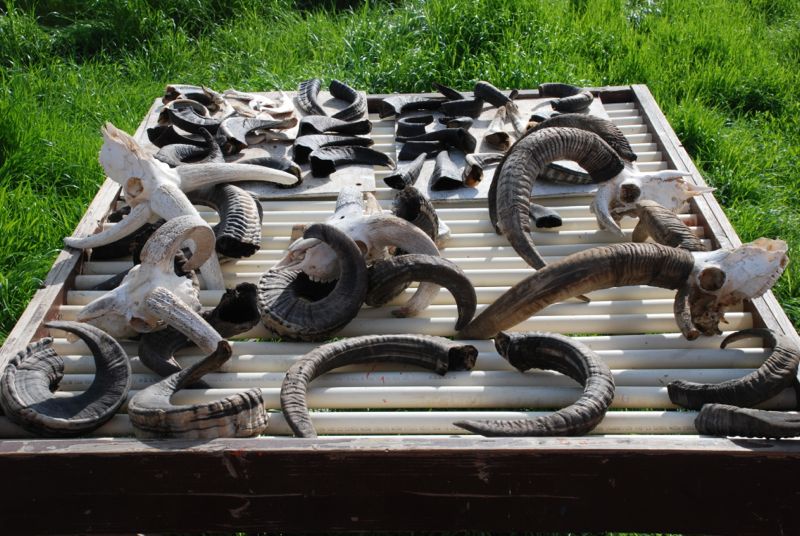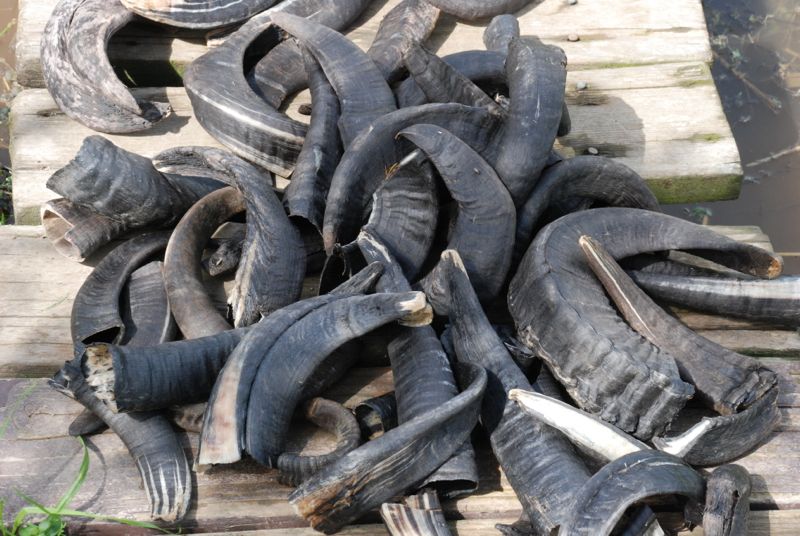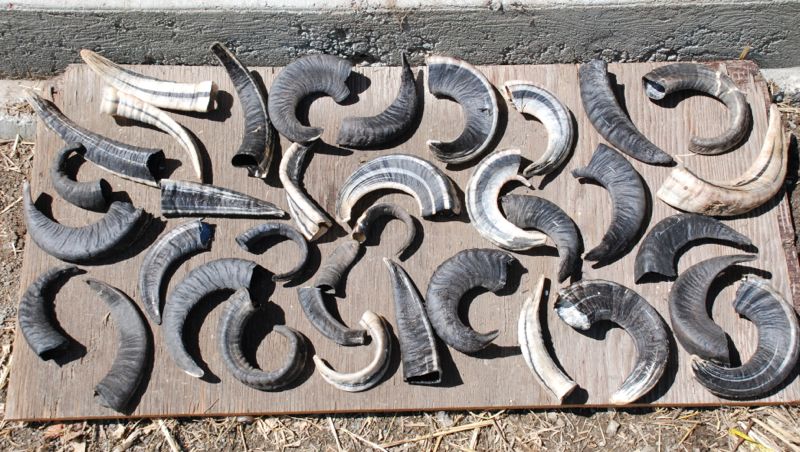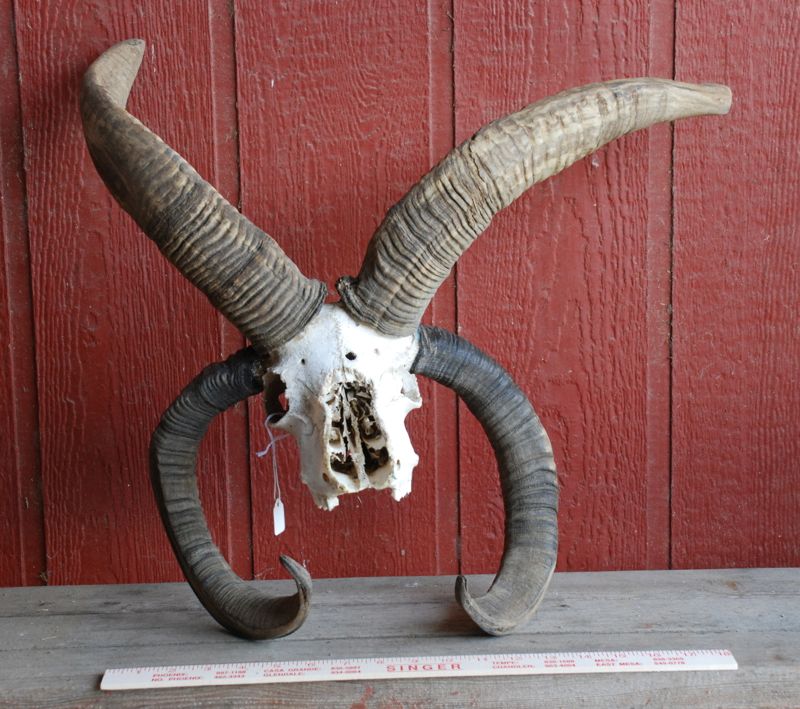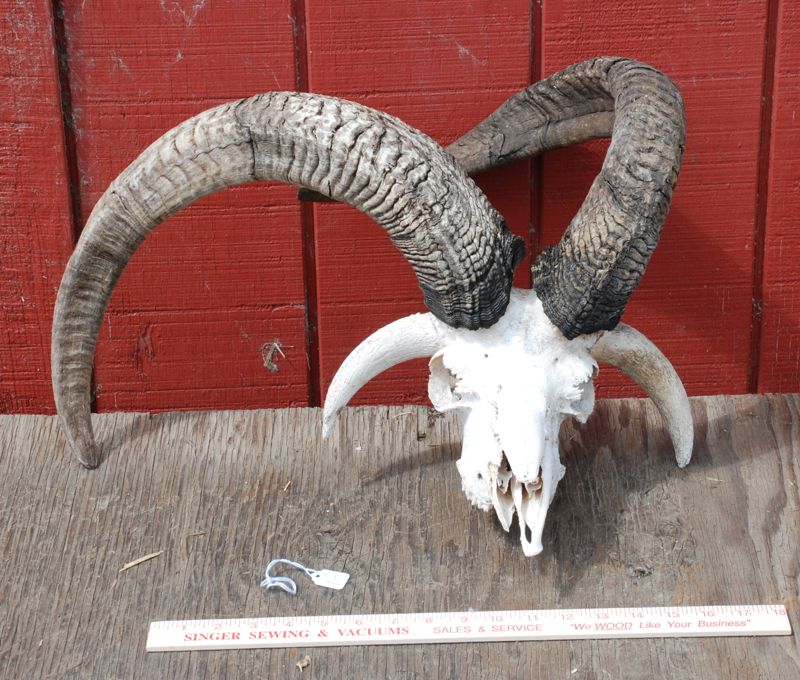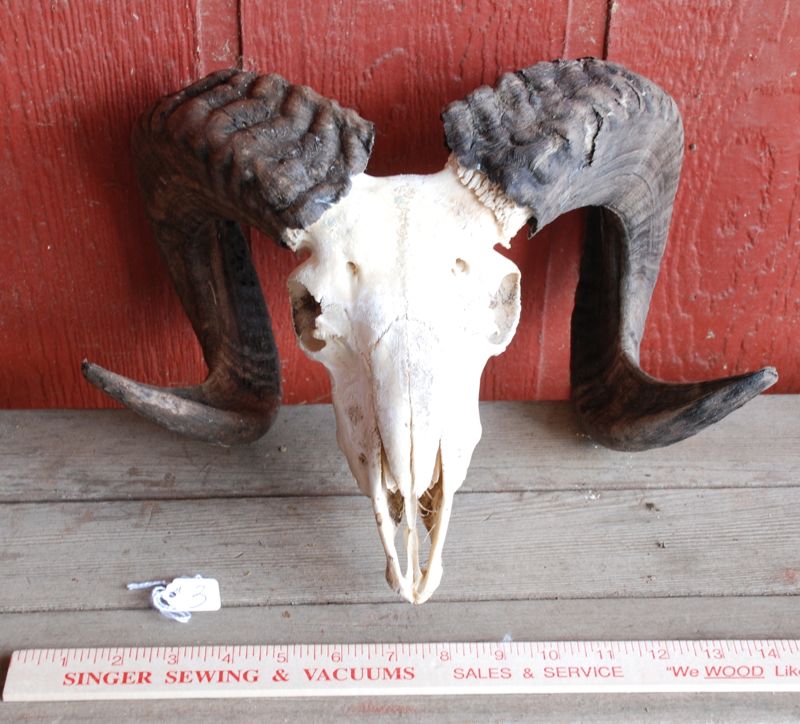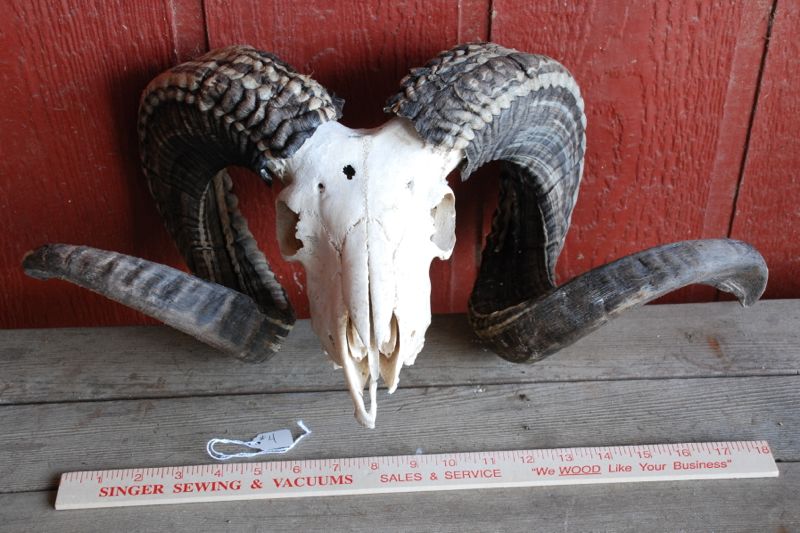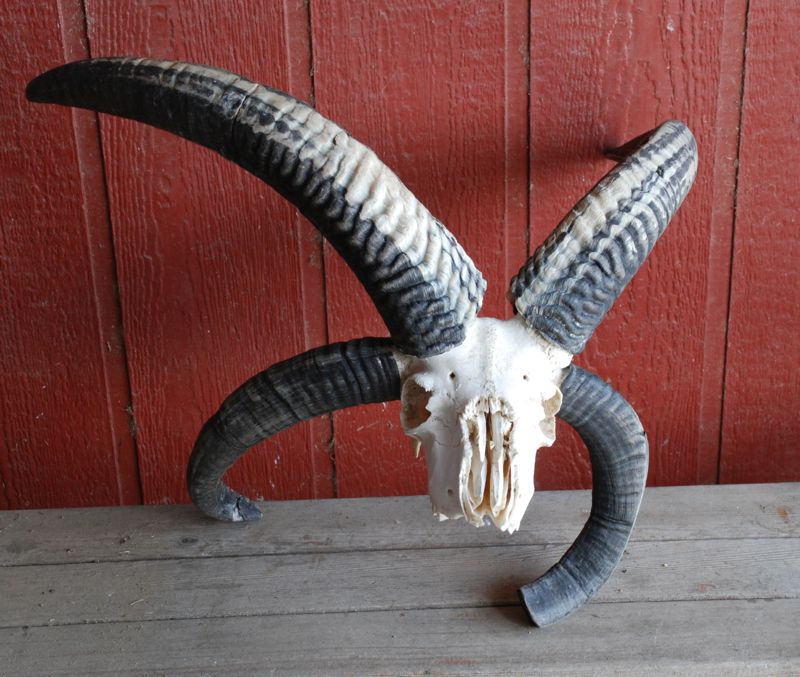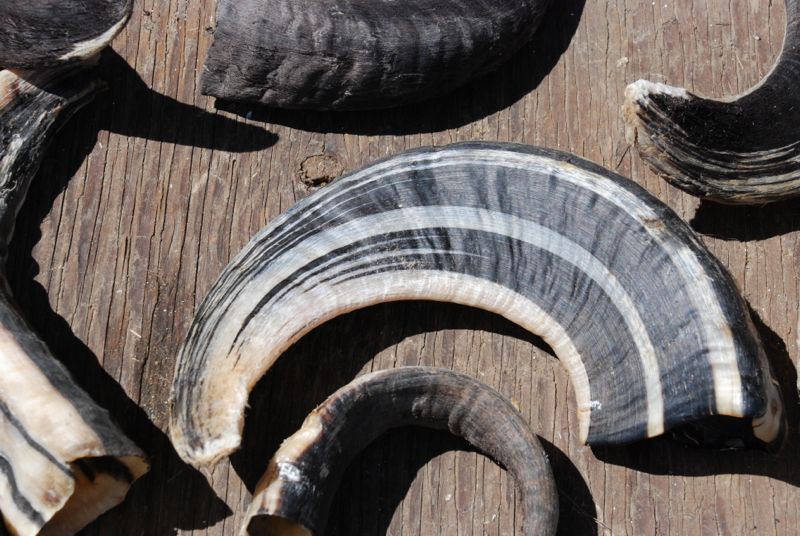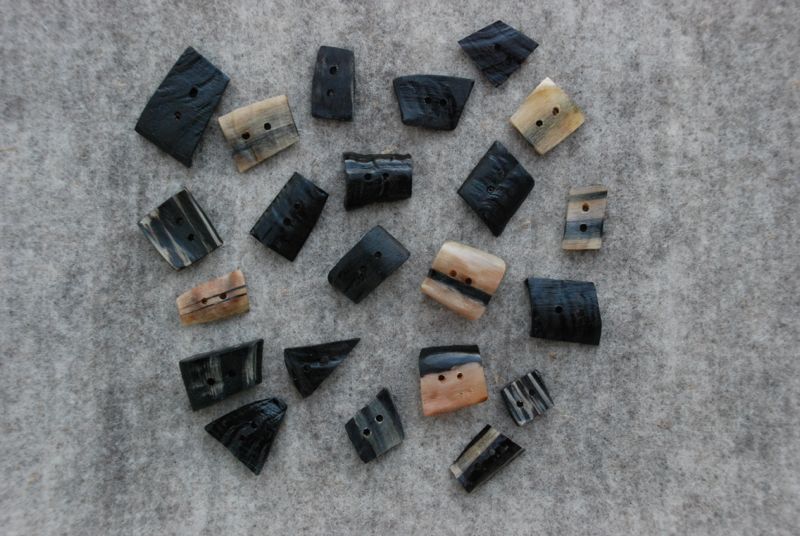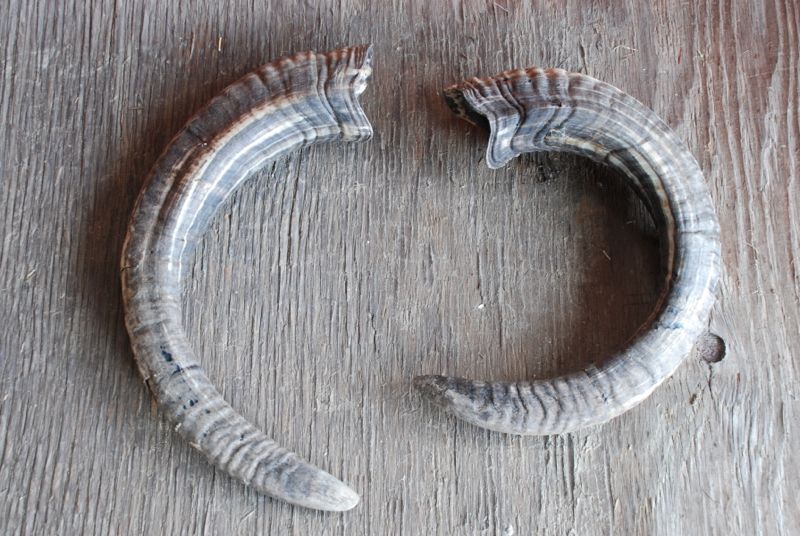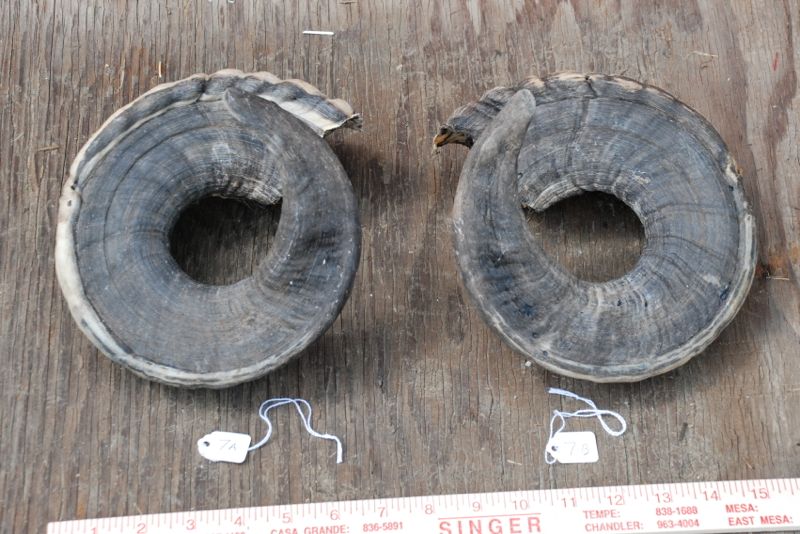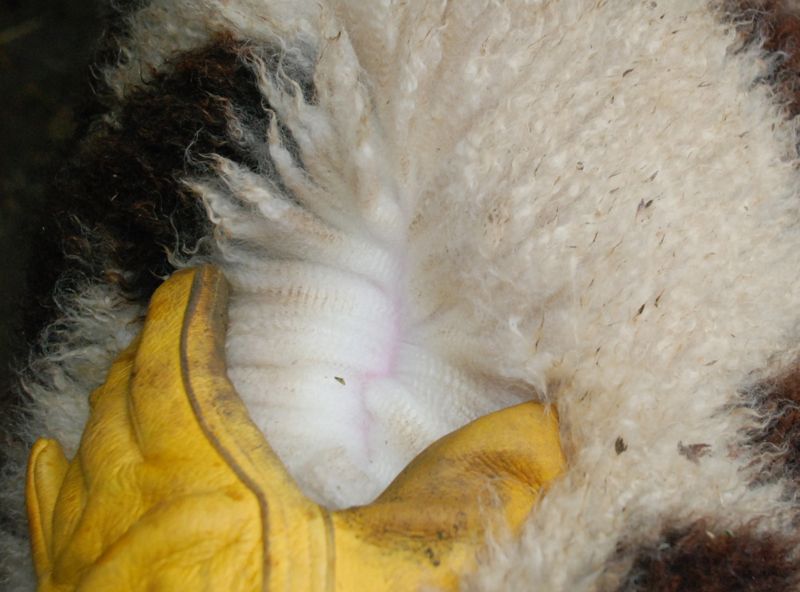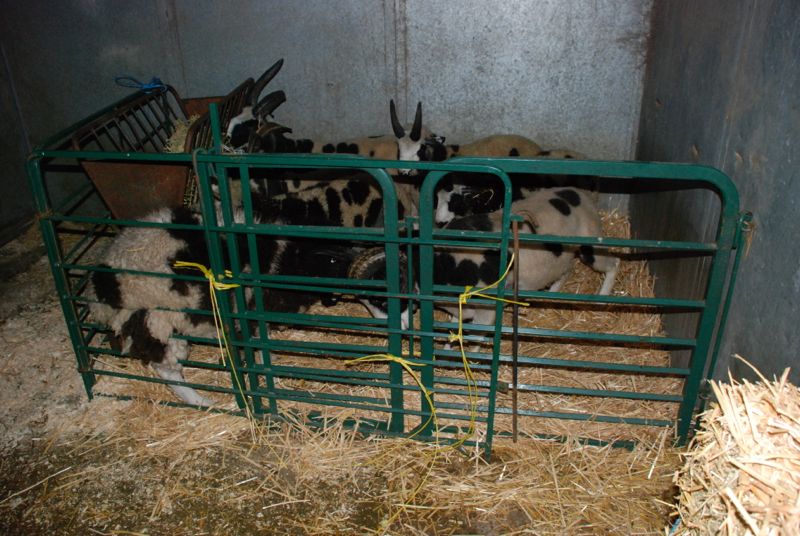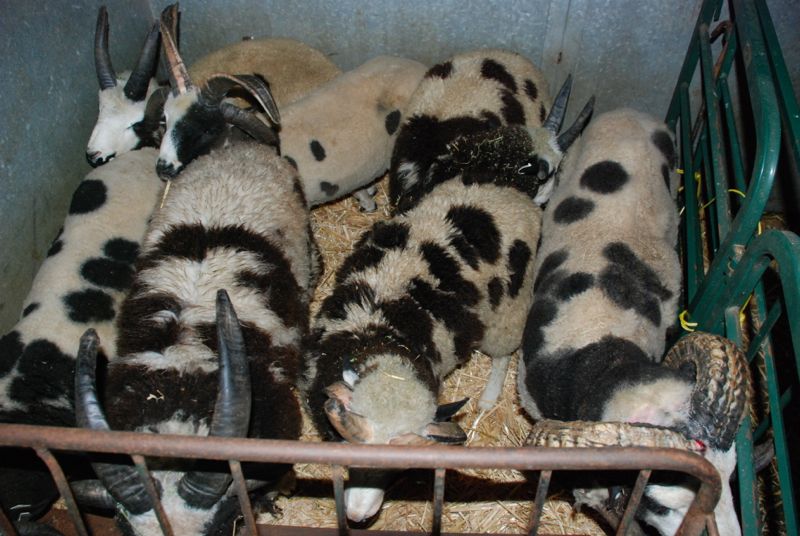The veterinarians from UC Davis VMTH were here on Monday. The VMTH sponsors the State Fair Nursery so they will come here to ultrasound ewes. I will be breeding 3 or 4 ewes at the same time as all the others are lambing. This fall, while I was breeding ewes to 6 different rams I also had a non-breeding group. Unfortunately, one of the rams got in with that group on the last day of my breeding season. I gave the 2 ewes he bred the sheep equivalent of the morning-after pill, so Monday was the day to see if it had worked.

No! Shelby is pregnant with a single and Mary has triplets. I think this is the photo of triplets. (If you must know, I can't always tell what I'm seeing in these.) By the way, a lamb at 42 days gestation is about the size of a gummy bear. That's not something that you find in a veterinary text, but vet students have pointed out the relationship to their teachers.



Here is one that I could see. There is a large (relatively) single lamb here in the middle just under that dark line. (It doesn't show up in this photo as well as it did seeing it on the screen.)
While the vets were here I showed them a wool sample from the fleece of a ram lamb, Presley.
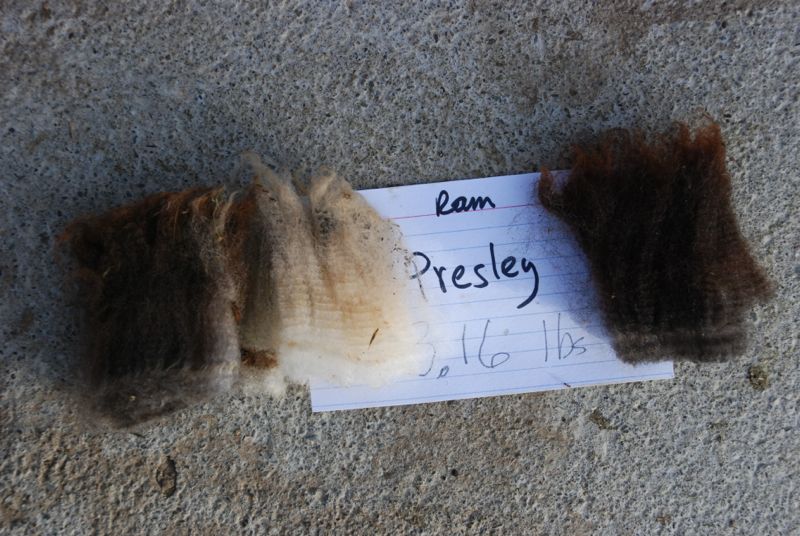 It isn't all that obvious in this photo, but can you see that distinct change in color and texture at the bottom of the locks? It is not weak at that point, but the fleece definitely changes color. That is the cut end, so the change occurred a couple of months before shearing. I thought that maybe this related to selenium deficiency or some other mineral issue. We looked at the ram.
It isn't all that obvious in this photo, but can you see that distinct change in color and texture at the bottom of the locks? It is not weak at that point, but the fleece definitely changes color. That is the cut end, so the change occurred a couple of months before shearing. I thought that maybe this related to selenium deficiency or some other mineral issue. We looked at the ram.
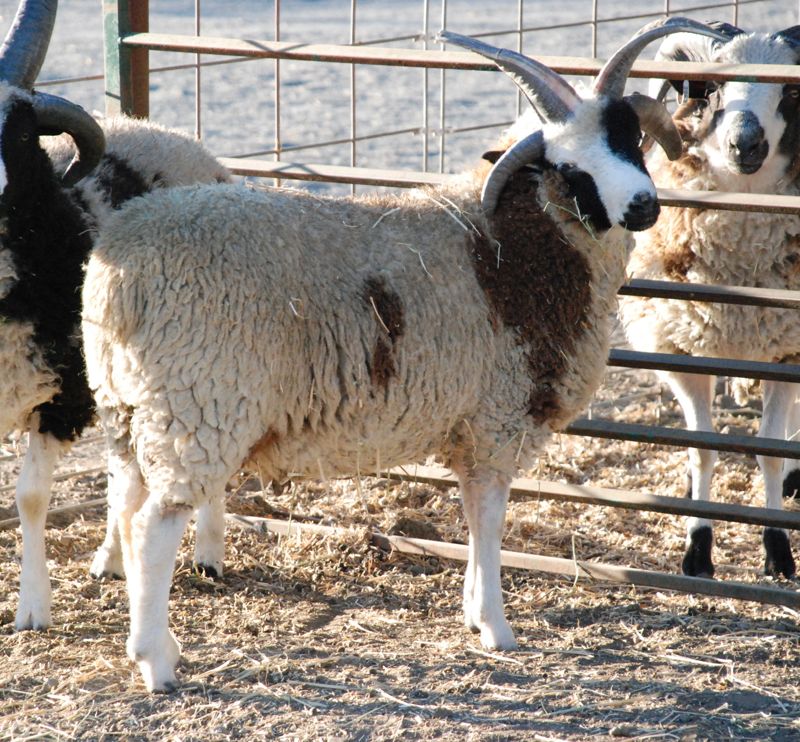 This is Presley, taken in mid-September. One observation of mine is that he won't register as a lilac ram, but his fleece is the brown/gray of a lilac and definitely not black and white. (In this photo the dark wool just shows sun-bleaching, but when you look at the fleece sample you can see that is is not black.) However his facial markings look black. I think this is what some people are calling a chocolate lilac.
This is Presley, taken in mid-September. One observation of mine is that he won't register as a lilac ram, but his fleece is the brown/gray of a lilac and definitely not black and white. (In this photo the dark wool just shows sun-bleaching, but when you look at the fleece sample you can see that is is not black.) However his facial markings look black. I think this is what some people are calling a chocolate lilac.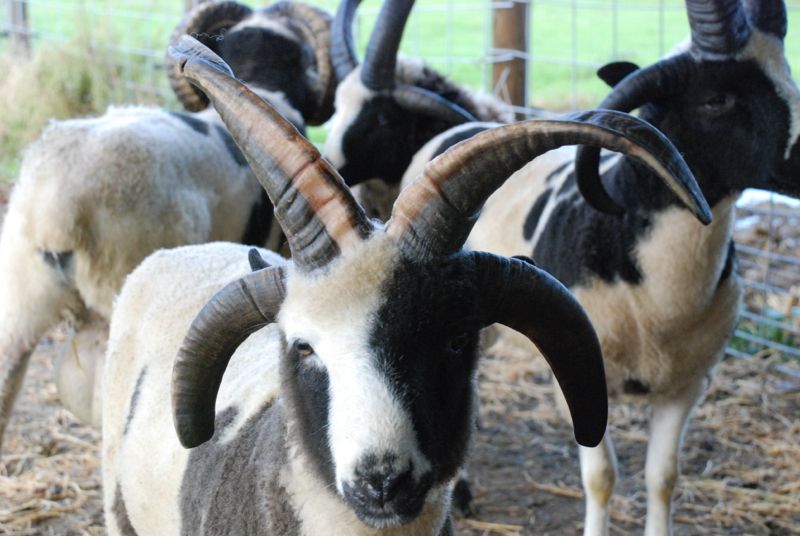 This is Presley now. Take a look at his horns.
This is Presley now. Take a look at his horns.
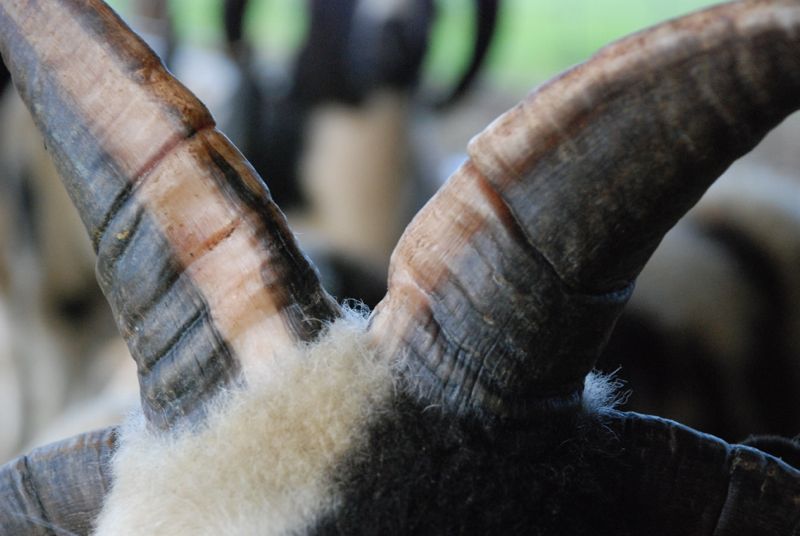 I hadn't noticed before, but all 4 horns have a ridge in the same place and the vets wondered if this related to the same conditions that caused the change in the fleece sample. When you look back at the first photo of Presley from September 17 you see that his horns are smooth. I posted a video of Presley taken September 24 that shows what I think is one of the many possible symptoms of bluetongue. The last two photos were taken 3 months after that. Did the illness result in the change in horn growth and the fleece observations? It is not any matter of earth-shaking importance, but I find it an interesting idea. My simple question about the fleece has led to a lot of other inquiries.
I hadn't noticed before, but all 4 horns have a ridge in the same place and the vets wondered if this related to the same conditions that caused the change in the fleece sample. When you look back at the first photo of Presley from September 17 you see that his horns are smooth. I posted a video of Presley taken September 24 that shows what I think is one of the many possible symptoms of bluetongue. The last two photos were taken 3 months after that. Did the illness result in the change in horn growth and the fleece observations? It is not any matter of earth-shaking importance, but I find it an interesting idea. My simple question about the fleece has led to a lot of other inquiries.
We looked at the rest of the rams while the vets were here.
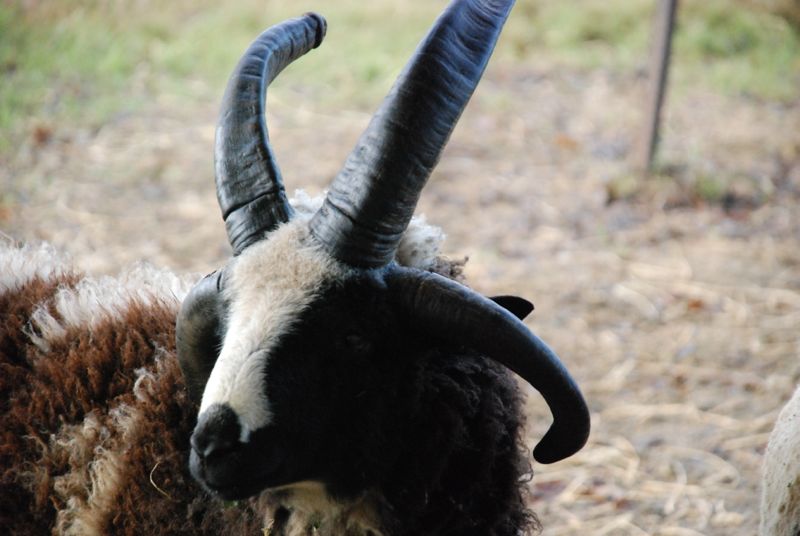 This is Larry, who was breeding a friend's flock and just came home. The friend told me that she thought Larry had blue tongue also. Note the ridges on his horns.
This is Larry, who was breeding a friend's flock and just came home. The friend told me that she thought Larry had blue tongue also. Note the ridges on his horns.
The reason that I asked the vets about Presley's fleece is that I had remembered seeing another fleece with the same discoloration. I had taken a photo of it at the time.
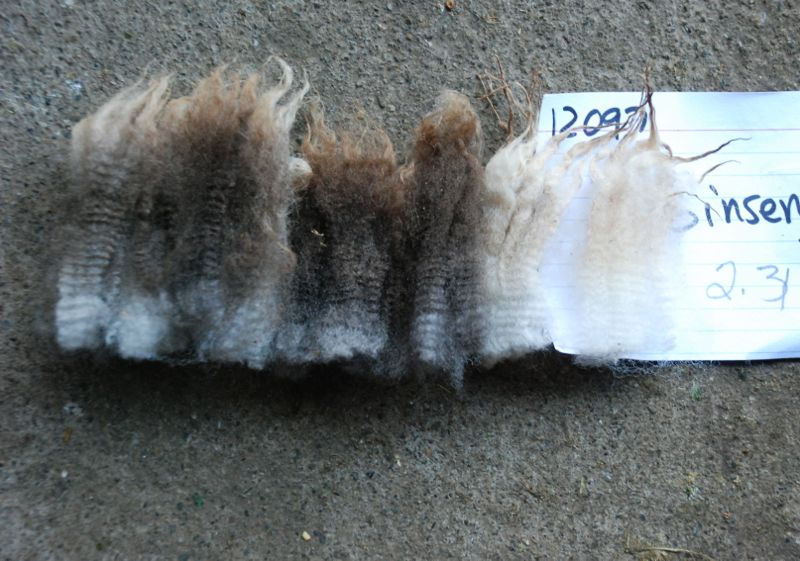 Ginseng is also a lilac lamb and her fleece shows the color change at the same place as does Presley's.
Ginseng is also a lilac lamb and her fleece shows the color change at the same place as does Presley's.
I have no answers yet (except that Mary and Shelby won't be going to the fair), but I'm going to examine the rest of the fleeces as I sort through them and I think I'll pay more attention to horn growth after this. I'll report back if the vets give me any answers.
 This is Marilyn with her mom, Hot Lips.
This is Marilyn with her mom, Hot Lips.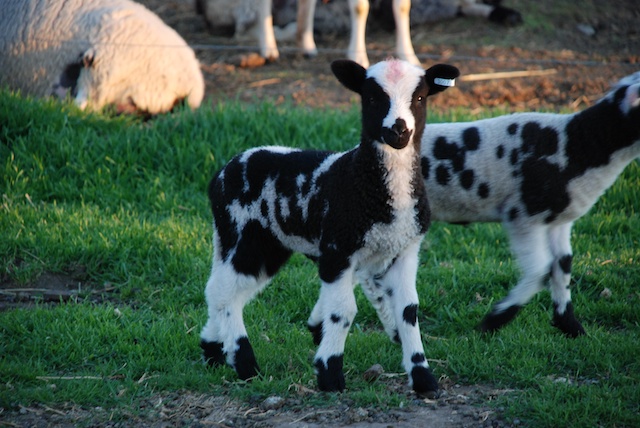 2 1/2 weeks old.
2 1/2 weeks old. First in her class at Black Sheep Gathering, 4 months old.
First in her class at Black Sheep Gathering, 4 months old.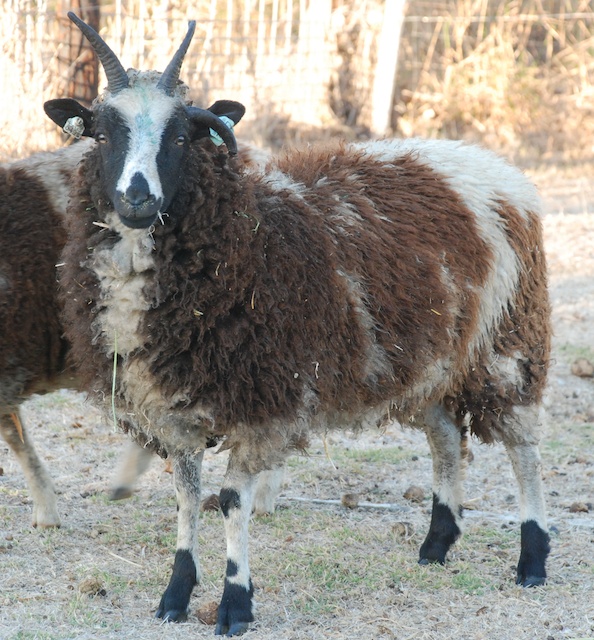 Marilyn at 8 months old. Isn't she pretty?
Marilyn at 8 months old. Isn't she pretty?  Santana at 10 days old.
Santana at 10 days old.  About a month old.
About a month old. Not quite two months old.
Not quite two months old. 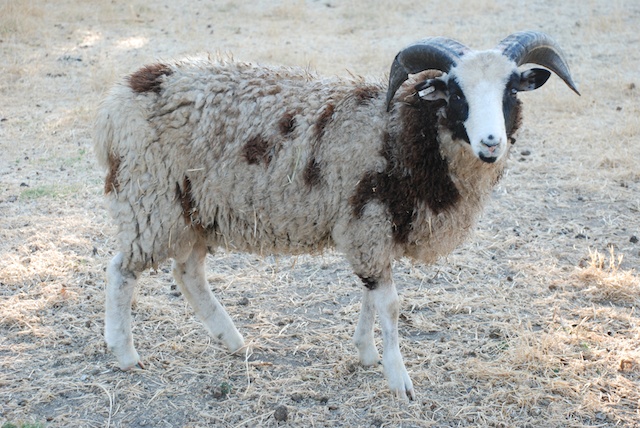 5 1/2 months old with a great horn spread.
5 1/2 months old with a great horn spread. Santana with his ewes 7 1/2 months old.
Santana with his ewes 7 1/2 months old.  That's Alex on the right at about 10 days old. Not much color on that side. Fortunately he has more on the other.
That's Alex on the right at about 10 days old. Not much color on that side. Fortunately he has more on the other.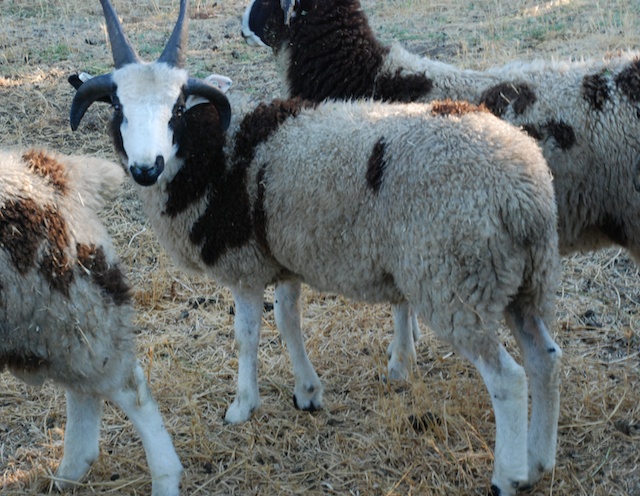 About 4 months old.
About 4 months old. About 8 months old.
About 8 months old. Alex after shearing, 9 months.
Alex after shearing, 9 months. This is Cascade at 10 days old.
This is Cascade at 10 days old. Two months old.
Two months old.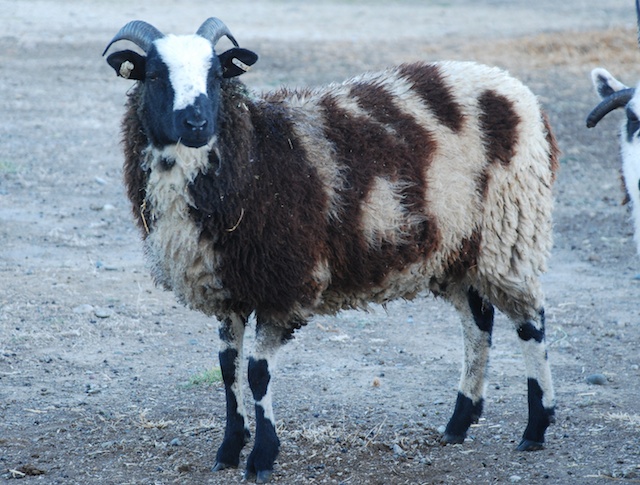 Here she is at 7 1/2 months.
Here she is at 7 1/2 months.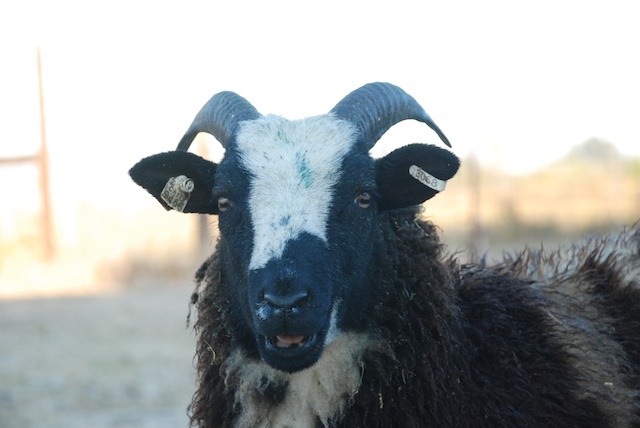

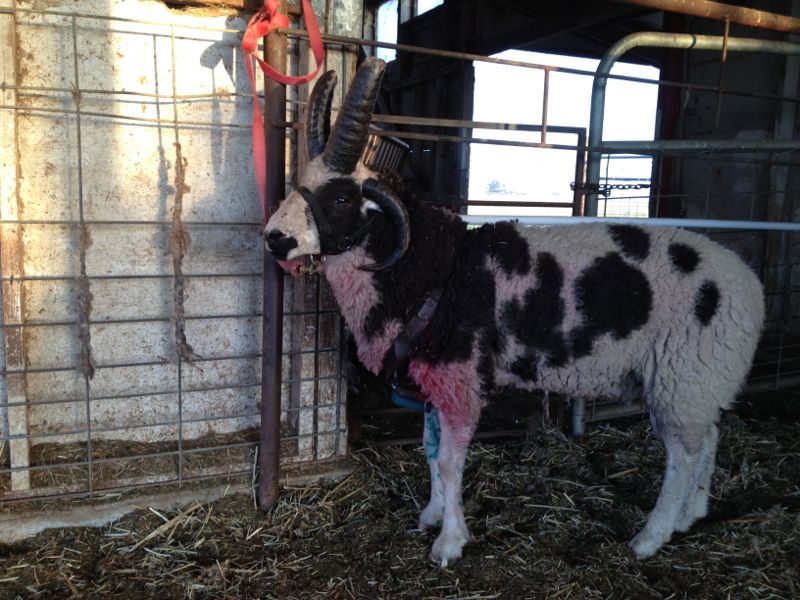
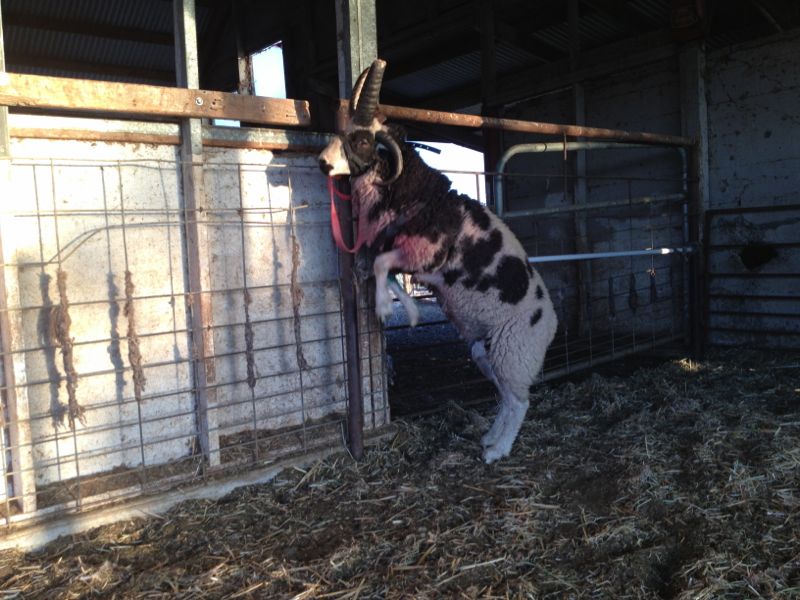
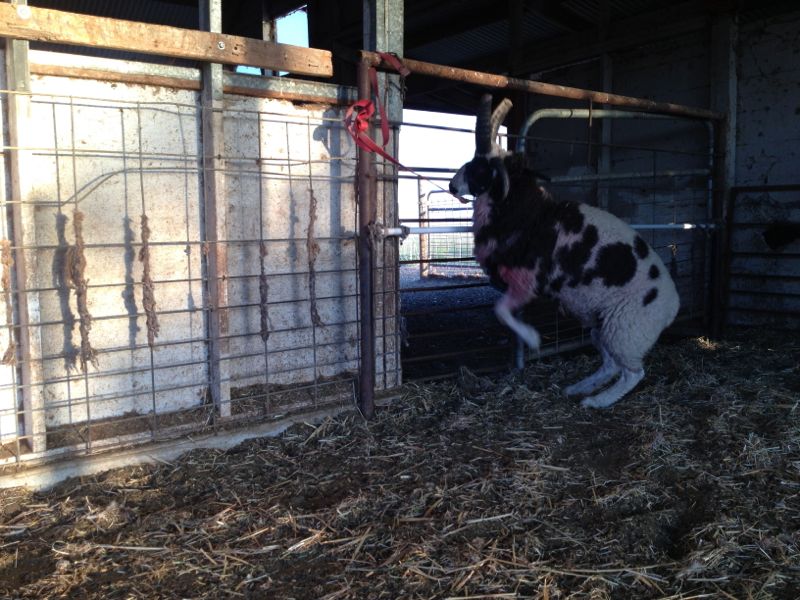
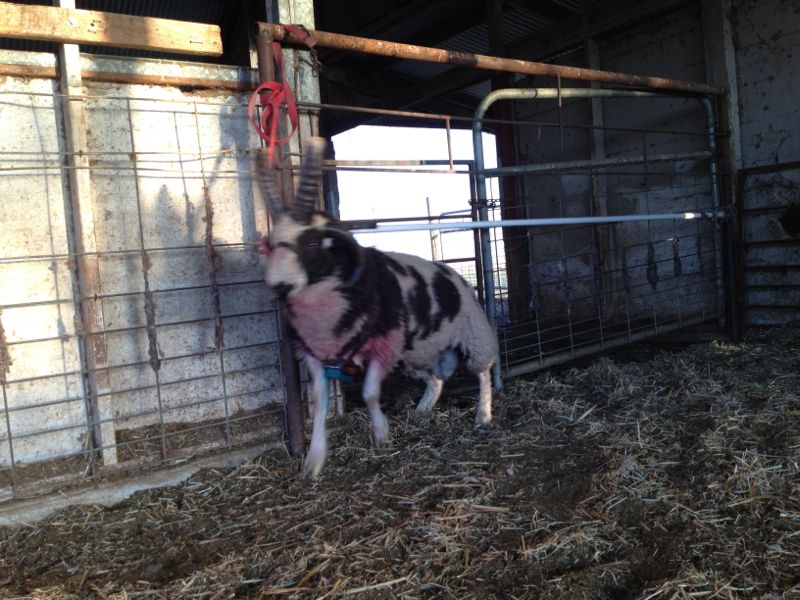
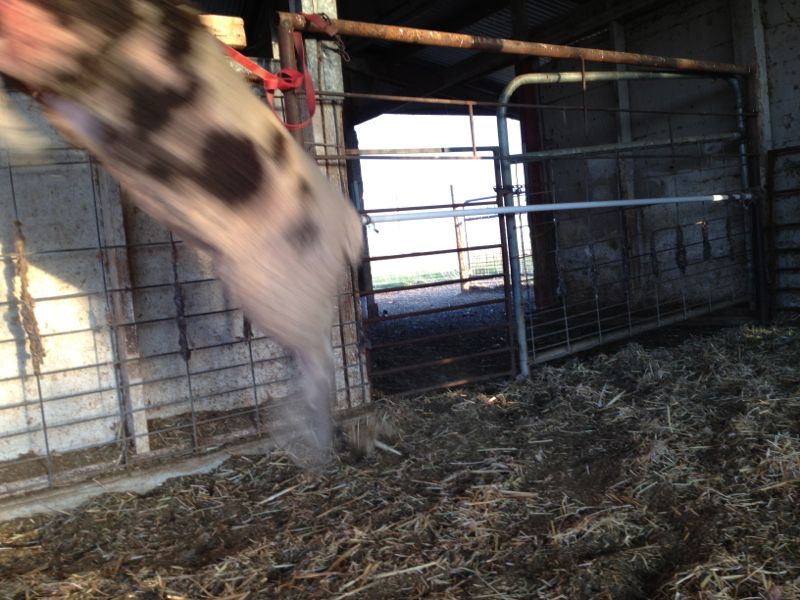
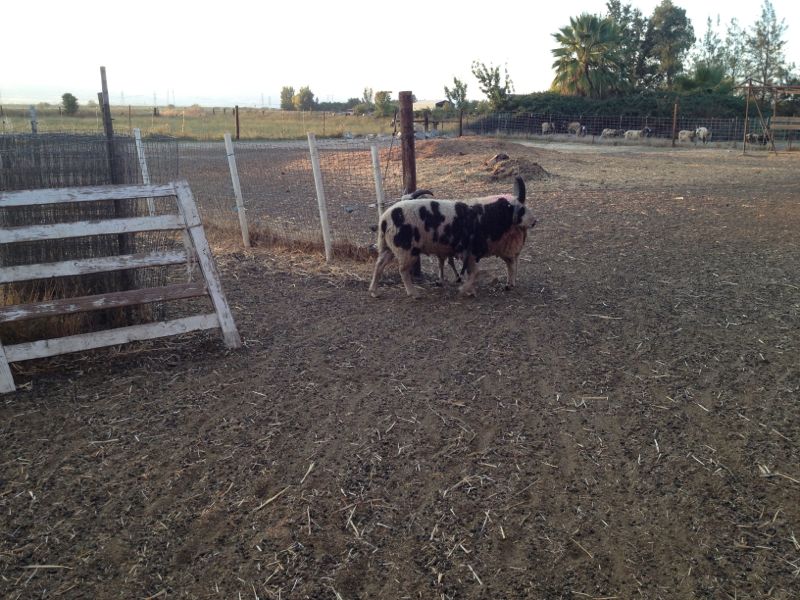
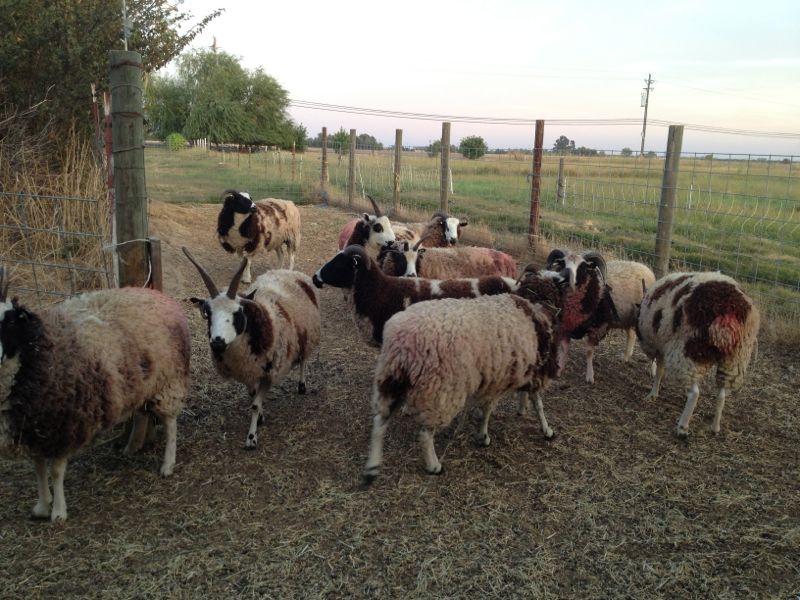
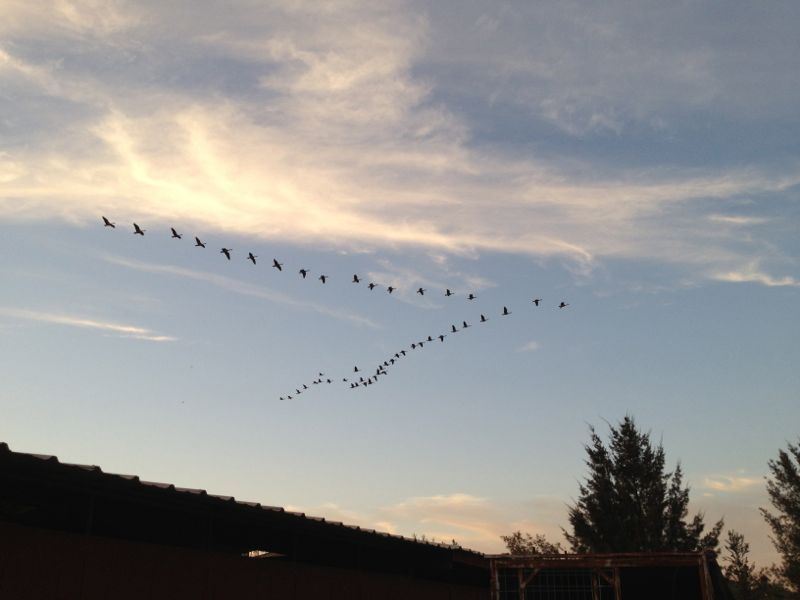

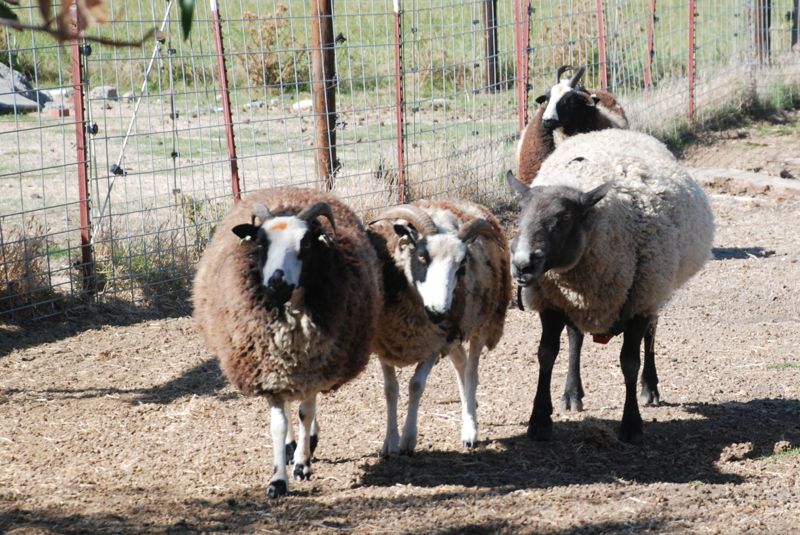
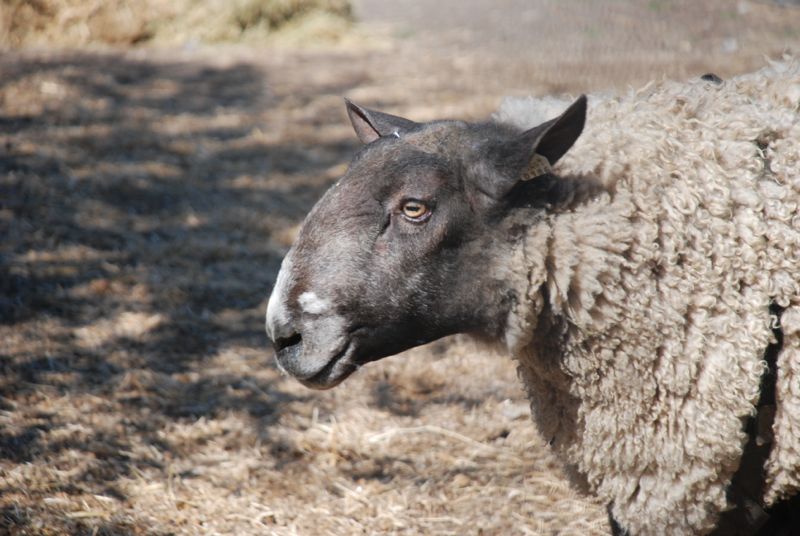
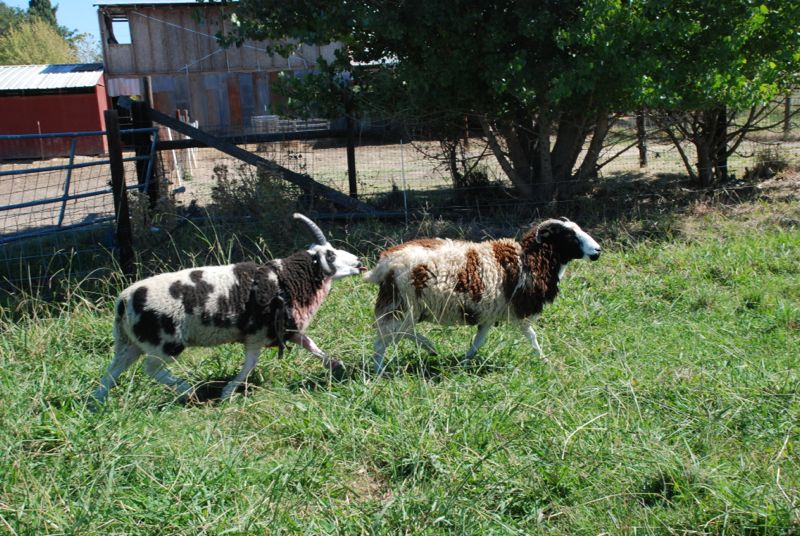
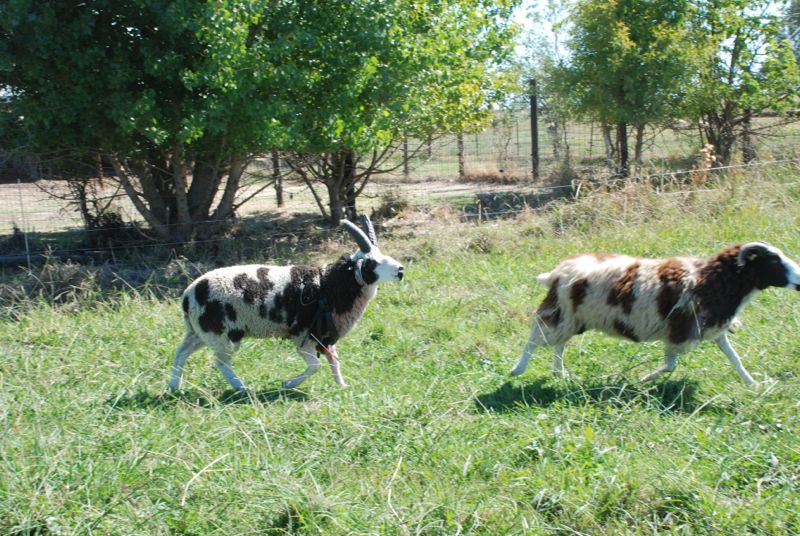
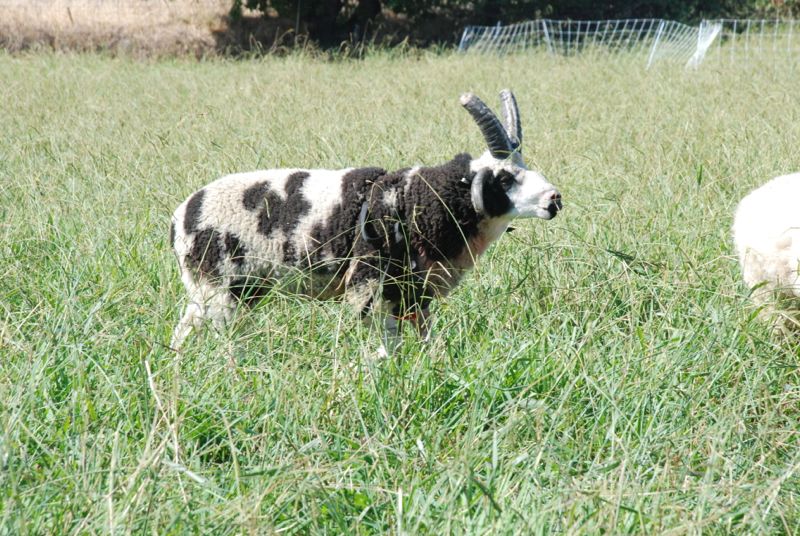
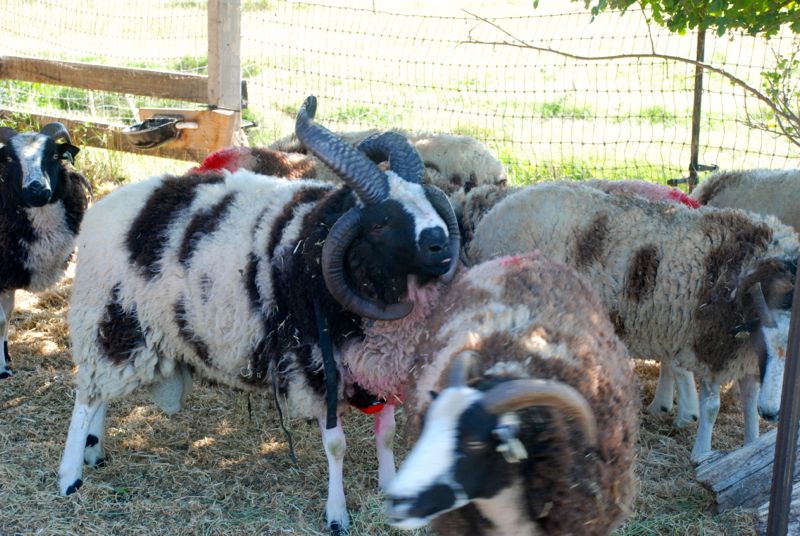
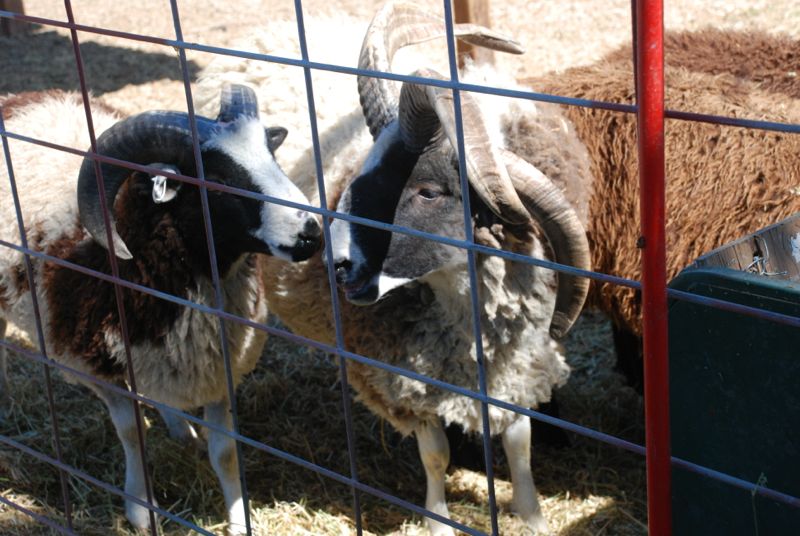
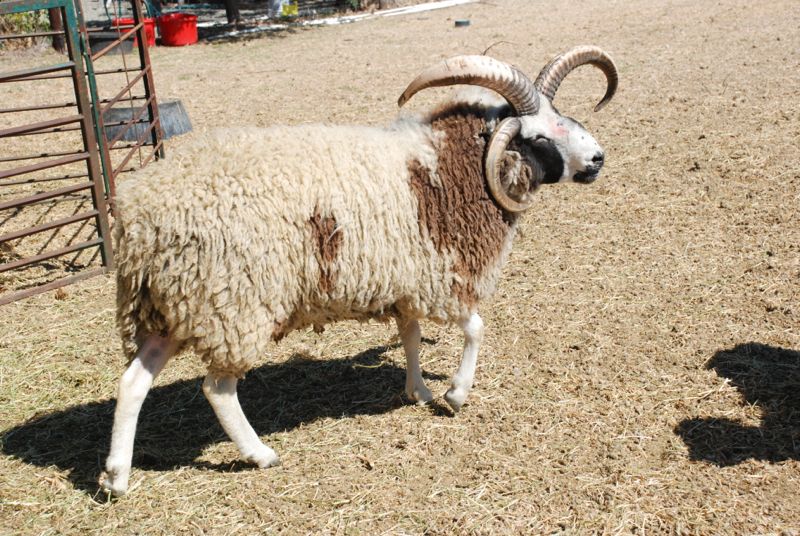 I wanted to use one of this year's ram lambs for the fourth group of ewes. I had a hard time choosing among the rams I have saved. My first choice was a four-horn ram lamb who I think has promise and also placed well at the summer shows. Unfortunately, he was very sick with bluetongue (insect transmitted virus common in the fall) a few weeks ago. He pulled through (I lost two others) but with the 106+ temperature I can not be sure that he is fertile. He may have his chance next year, but this year I needed to find another ram.
I wanted to use one of this year's ram lambs for the fourth group of ewes. I had a hard time choosing among the rams I have saved. My first choice was a four-horn ram lamb who I think has promise and also placed well at the summer shows. Unfortunately, he was very sick with bluetongue (insect transmitted virus common in the fall) a few weeks ago. He pulled through (I lost two others) but with the 106+ temperature I can not be sure that he is fertile. He may have his chance next year, but this year I needed to find another ram. 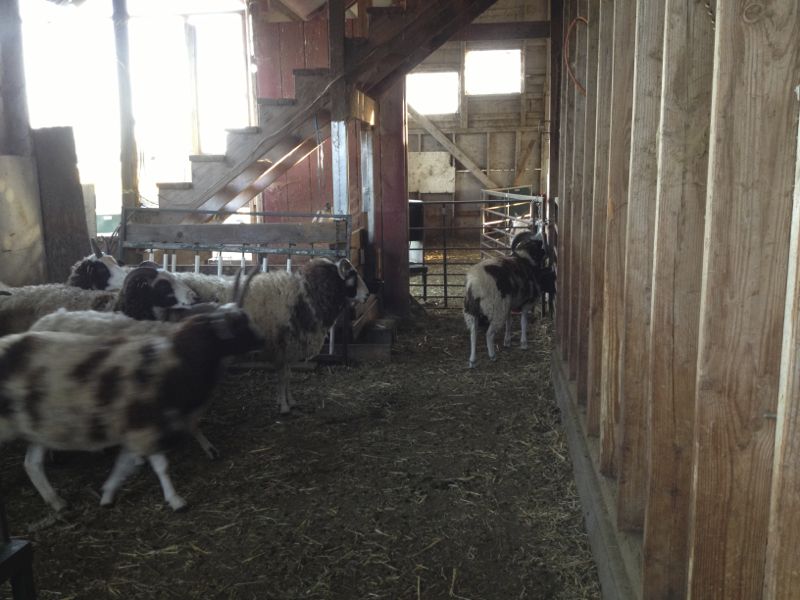
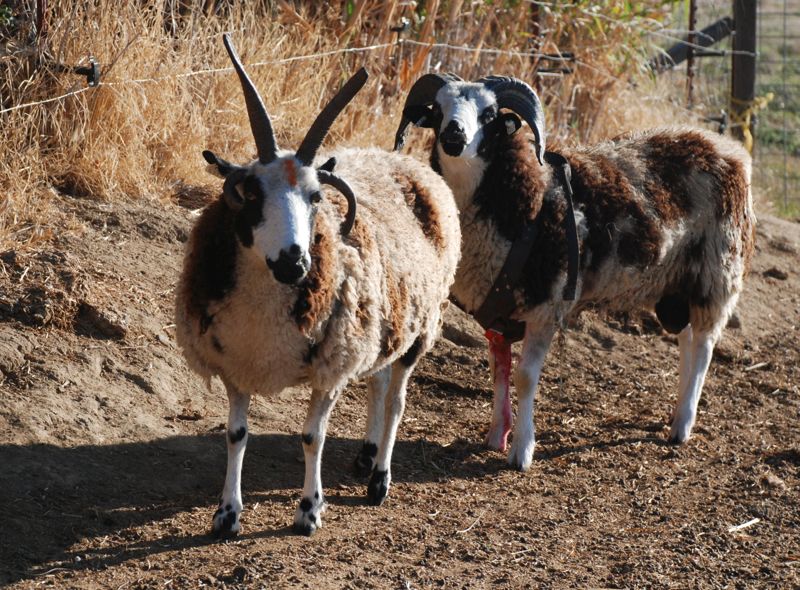
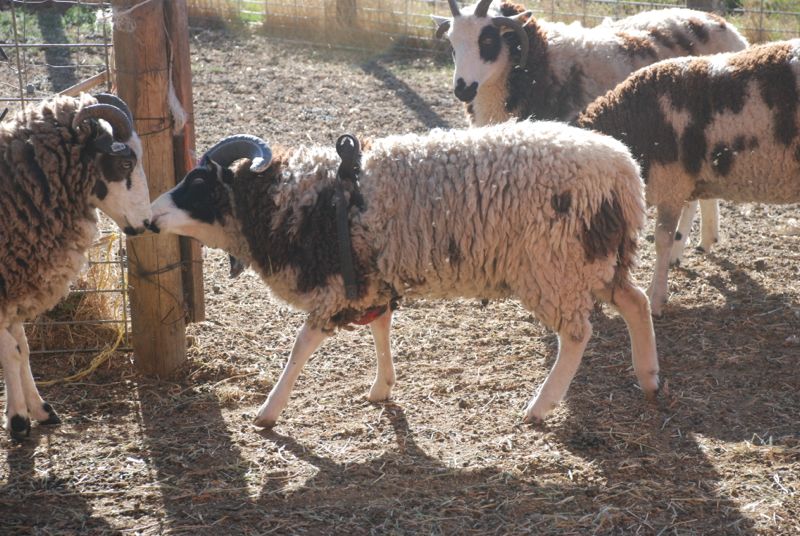
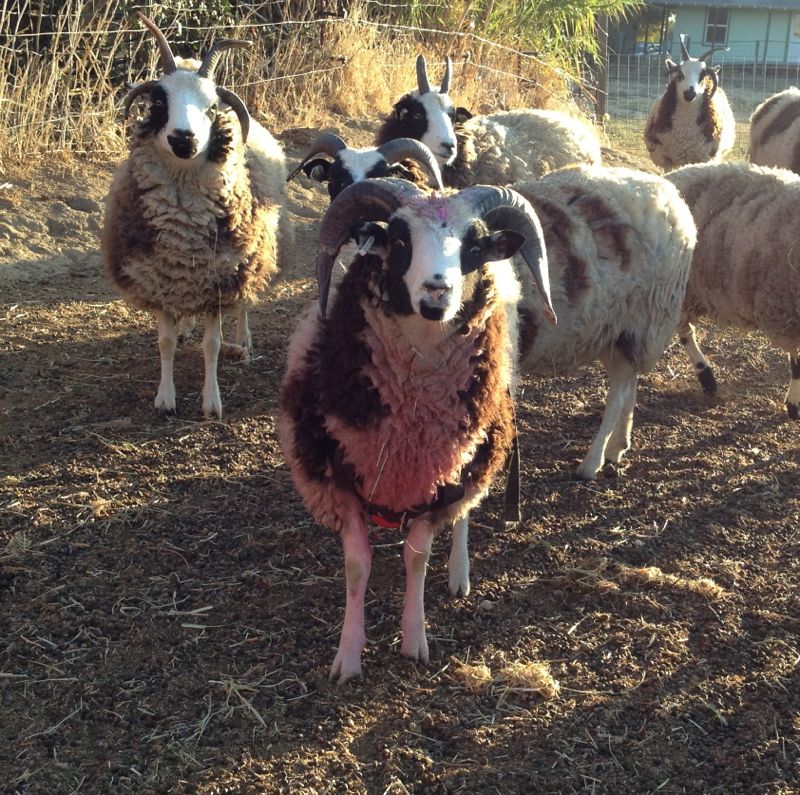 He weighs less than all these ewes but that doesn't seem to bother him (or the ewes).
He weighs less than all these ewes but that doesn't seem to bother him (or the ewes).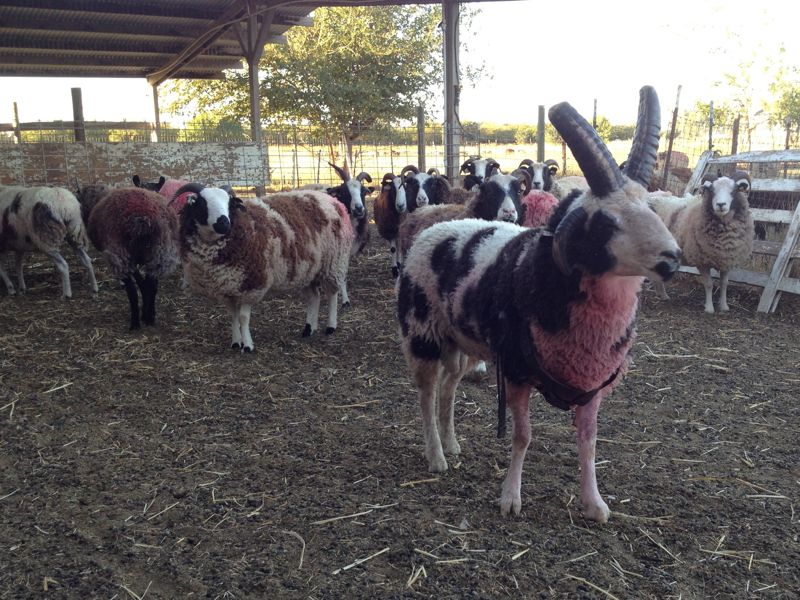
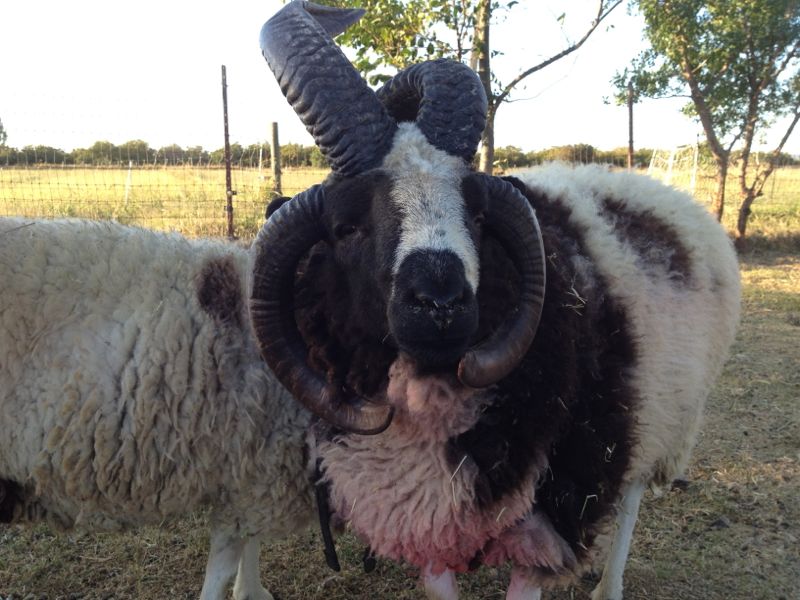
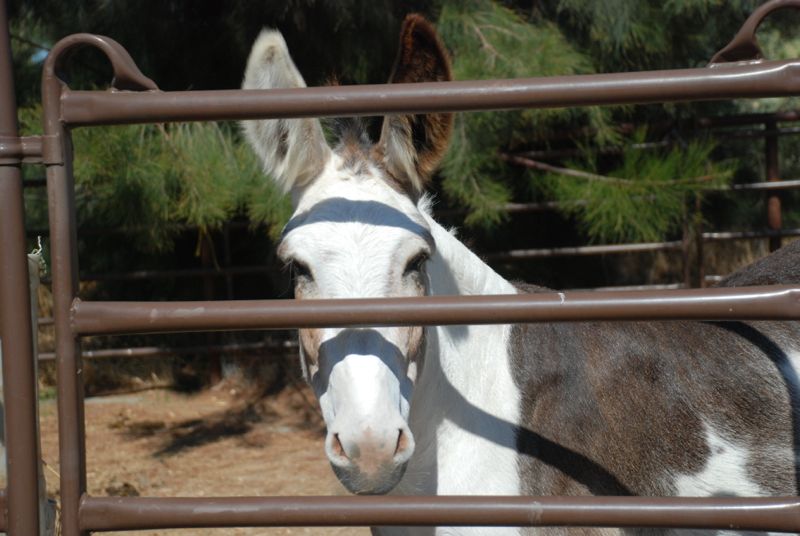
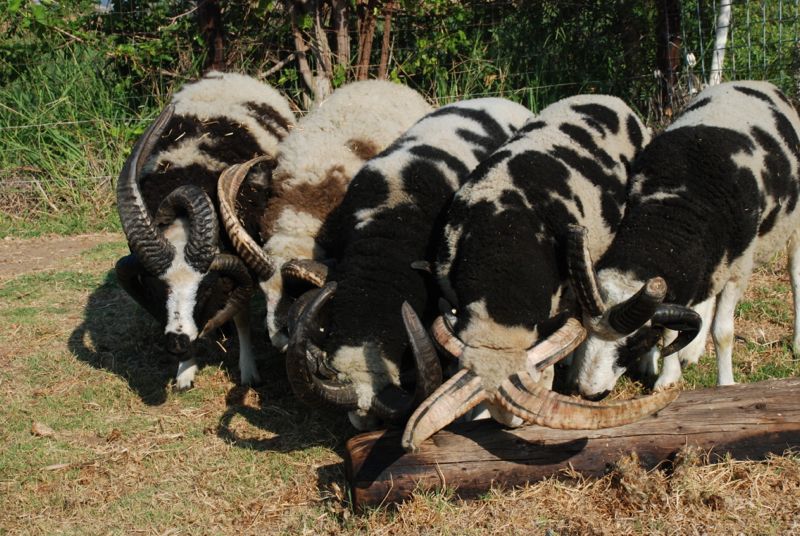
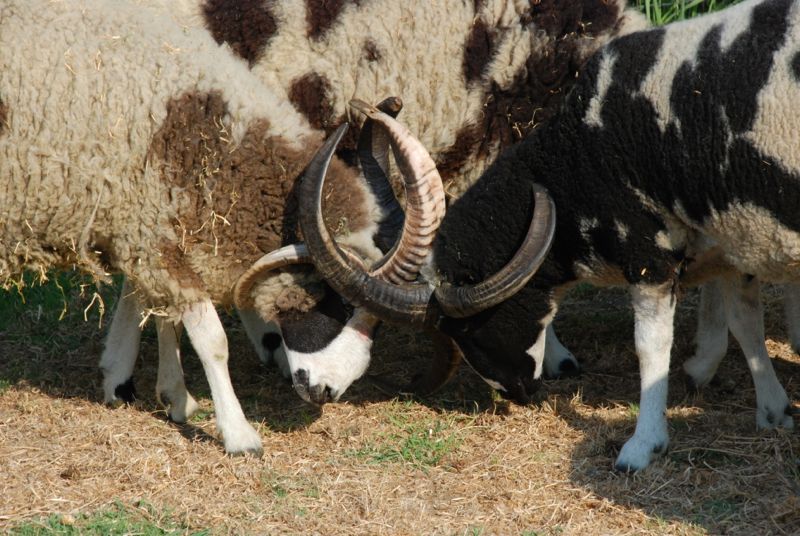
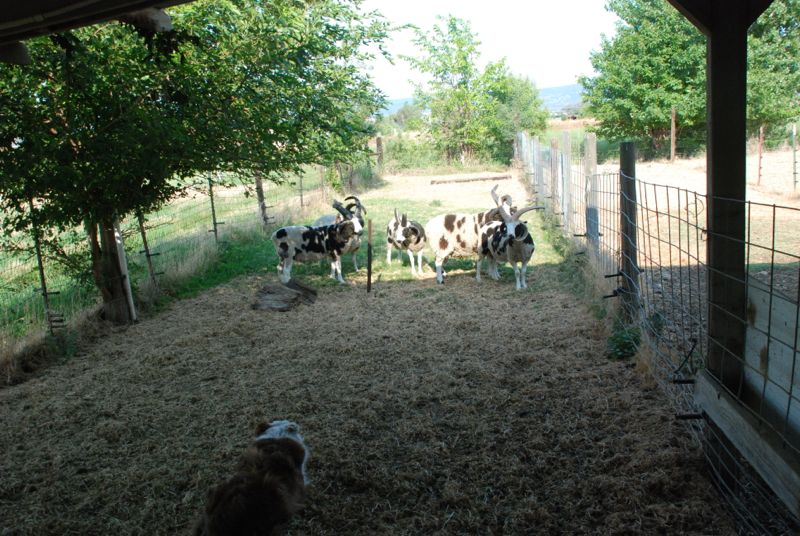 Rusty helps move them around.
Rusty helps move them around.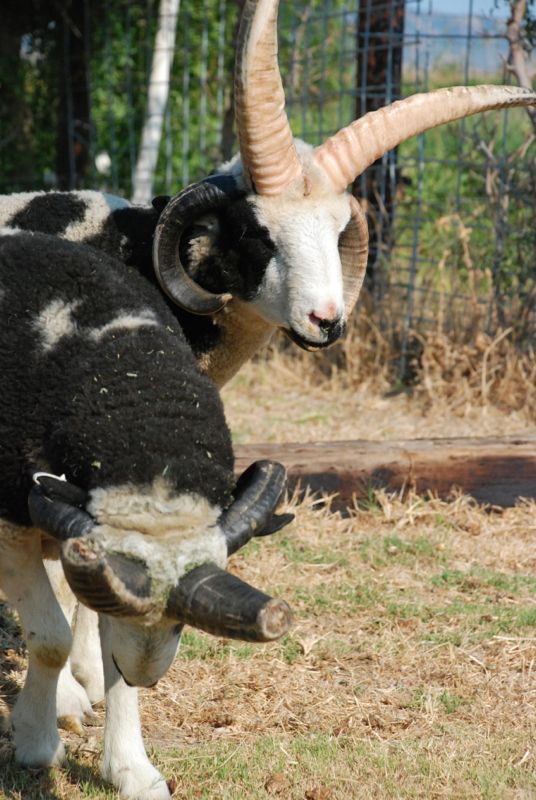
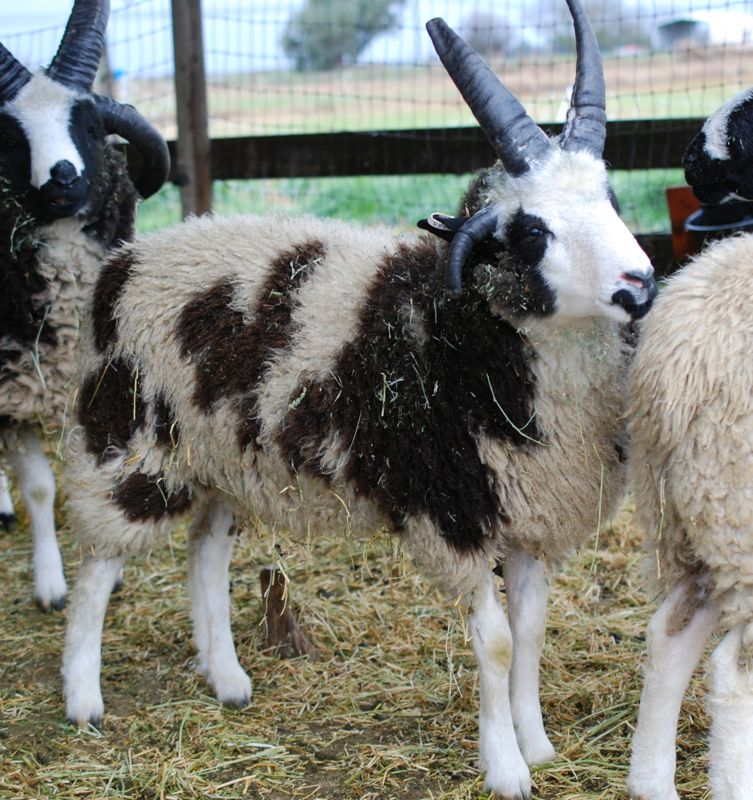
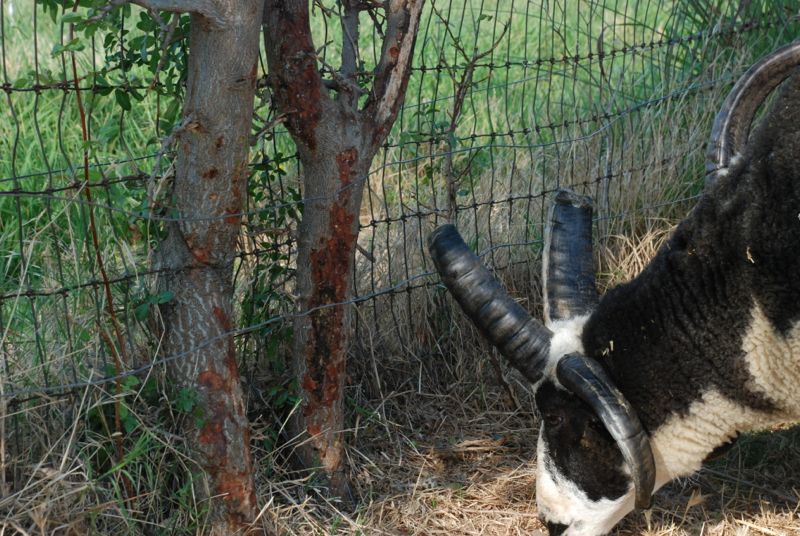
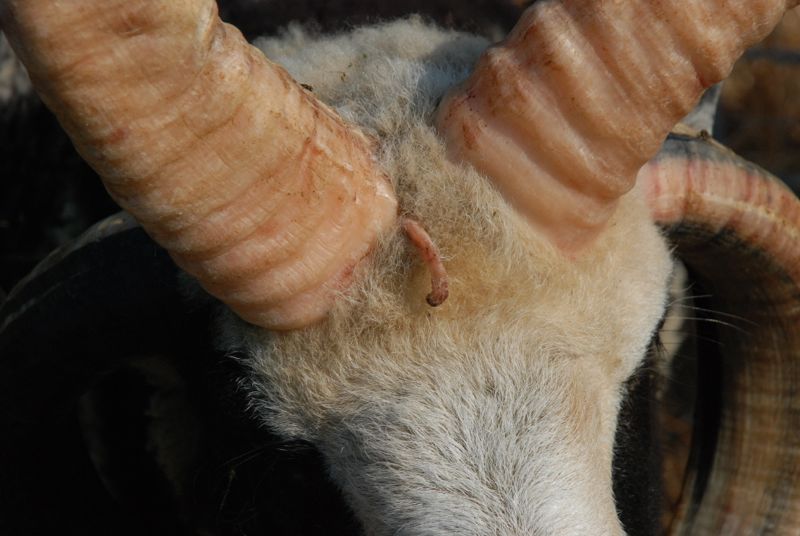 ... take a closer look at the ram with the white horns.
... take a closer look at the ram with the white horns.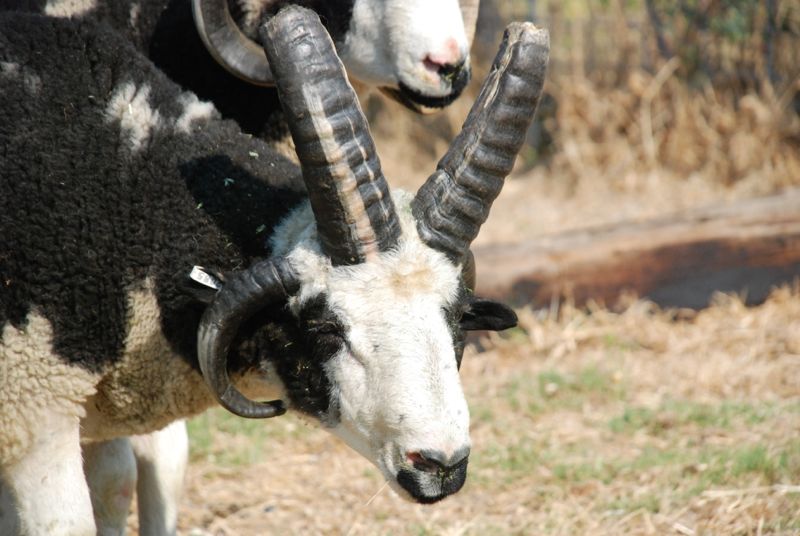
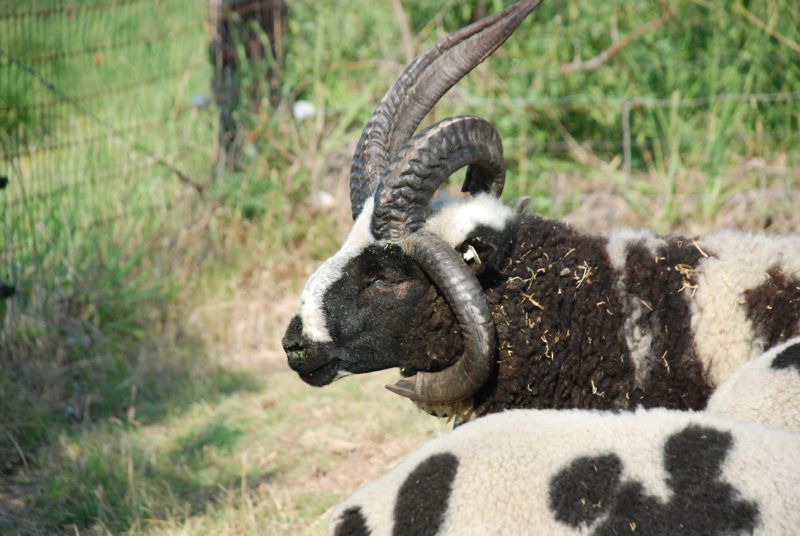
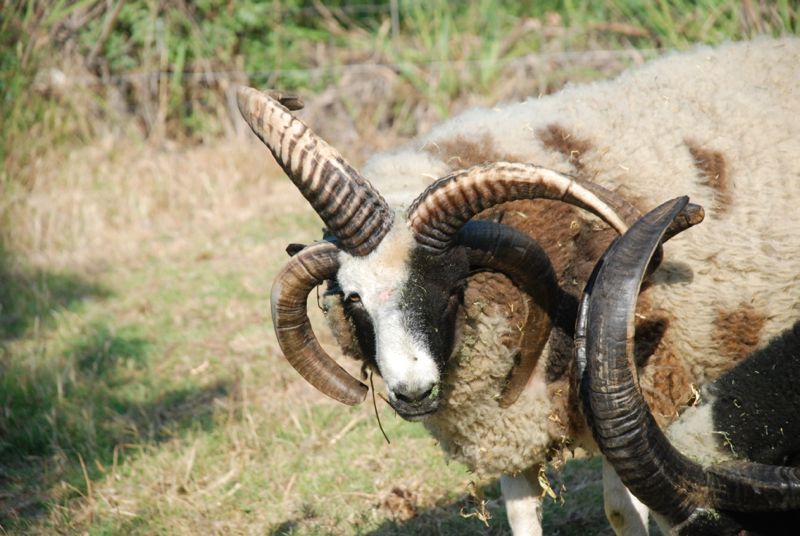
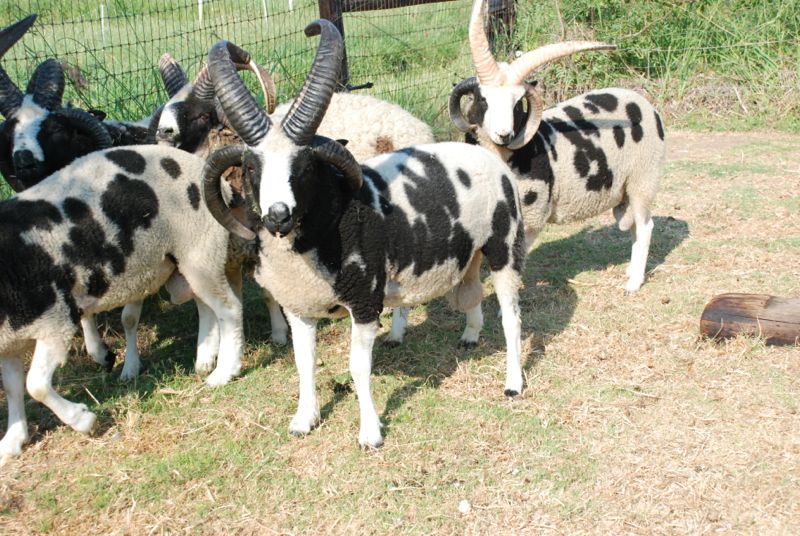 Larry (Ruby Peak Linden x M. Spring)
Larry (Ruby Peak Linden x M. Spring)